Latest Blogs
Understanding Turner Syndrome: Symptoms, Causes, Types, and Treatment
What is Turner Syndrome? Turner syndrome is a genetic disorder that affects females, which is characterized by partial or completely absence of an X chromosome. Girls with Turner syndrome often exhibit short physiques, delayed puberty and infertility. Turner syndrome can also cause heart defects, learning disabilities, and other health problems. Diagnosis usually occurs in early childhood, allowing early intervention to manage Turner syndrome symptoms and improve quality of life for those affected. How common is Turner Syndrome? In India alone, recent statistics reveal that approximately 1 in 2,500 to 3,000 female births is affected by Turner syndrome. These numbers are also significant worldwide. It is important to remember that Turner syndrome does not discriminate, it can affect any woman or girl across ethnic and socio-economic groups. What causes Turner syndrome? Turner syndrome causes are derived from chromosomal abnormalities, especially the complete or partial loss of an X chromosome in females. This genetic mutation occurs randomly during the formation of reproductive cells or early fetal development, leading to Turner syndrome. Absence of the X chromosome can cause a variety of symptoms, including short stature and ovarian insufficiency. Turner syndrome causes are not hereditary and typically occur as a sporadic event in genetic development. What are the types of Turner Syndrome? Turner syndrome types are classified based on the specific chromosomal abnormalities present. The most common type is Monosomy X, where a woman is born with only one X chromosome instead of the usual pair Another Turner Syndrome type includes Mosaic Turner syndrome, where some cells have two complete X chromosomes while others have only one. A third type is Partial Deletion, where one X chromosome is partially missing or altered. These Turner syndrome types lead to various physical and developmental characteristics, with severity and symptoms varying among individuals. Understanding Turner syndrome types helps in tailoring treatment and management plans to address specific needs and challenges. What are the symptoms of Turner Syndrome? Identifying Turner syndrome symptoms can sometimes be challenging because they can range from subtle to significant. In some girls, physical characteristics appear early, while in others they develop slowly over time. Let's take a closer look at some common Turner syndrome symptoms at different stages of life: Before Birth: Turner syndrome can be suspected during prenatal stages based on prenatal ultrasound. This could reveal abnormalities like large fluid collections at the back of the neck, heart defects, and abnormal kidneys. At Birth or During Infancy: The newborn or infant may exhibit signs such as a wide or web-like neck, broad chest with widely spaced nipples, upward-turned fingernails and toenails, swelling of the hands and feet, low-set ears, and cardiac defects. In Childhood, Teens and Adulthood: As girls with Turner syndrome grow, the most common signs noticed are short stature and ovarian failure due to ovarian failure. This might lead to slowed growth; lack of sexual changes during puberty; menstrual cycles that begin early and end abruptly; stunted sexual development during teenage years; and inability to conceive without fertility treatment. What are the common features of Turner Syndrome? Turner syndrome features are diverse and can vary widely among individuals. Common features include short stature, typically noticeable by age 5, and a lack of normal development of the ovaries, leading to infertility and delayed or absence of puberty. Other physical characteristics may include webbed neck, low-set ears, a broad chest with widely spaced nipples, and a low hairline at the back of the neck. Turner syndrome features often include heart defects, kidney abnormalities, and skeletal issues. Additionally, individuals may experience learning difficulties, particularly with spatial concepts and mathematics, though intelligence is usually normal. Which health conditions are associated With Turner Syndrome? Unfortunately, Turner syndrome cause various health conditions. Complications includes heart problems, high blood pressure, hearing loss, vision problems, kidney problems, immune system problems, bone problems, learning disabilities, psychological problems, infertility and complications of pregnancy. How is Turner Syndrome diagnosed? Turner syndrome is diagnosed through a combination of clinical examination and genetic testing. When a girl exhibits Turner syndrome symptoms, such as short stature, delayed puberty, or characteristic physical features such as a webbed neck and low-set ears, a health care professional may suspect Turner syndrome. A definitive diagnosis is made using a karyotype test, which analyzes the chromosomes in a blood sample to identify possible abnormalities. This test can reveal the Turner syndrome causes, such as a complete or partial absence of an X chromosome. Other tests, such as echocardiograms, kidney ultrasounds, and hormonal tests, help evaluate associated complications. Identifying these Turner syndrome types, such as Monosomy X or Mosaic Turner syndrome, helps understand disease variability and guide individualized care. What is the treatment for Turner Syndrome? Early diagnosis is critical to initiate Turner syndrome treatment, which may include growth hormone therapy to increase height, estrogen replacement therapy to induce puberty, and monitoring for heart, kidney, and thyroid problems. Regular monitoring by an interdisciplinary team ensures comprehensive management and support for affected individuals. Can Turner Syndrome be prevented? There is currently no known way to prevent Turner syndrome, as it is a genetic disorder that occurs randomly due to an error in cell division in the father's sperm or in the egg of the the mother. What can I expect if my child has Turner Syndrome? As a parent of a child with Turner syndrome, you may be concerned about what lies ahead. With early diagnosis and appropriate medical care from a variety of specialists, including geneticists and endocrinologists, many girls and women with this condition live healthy lives. What is the life expectancy of someone with Turner Syndrome? With proper medical care and routine check-ups to manage potential health risks and complications from heart defects or other associated conditions, individuals with Turner syndrome can have a near-normal life expectancy. How can I take care of my child with Turner Syndrome? Caring for a child with Turner syndrome involves regular health check-ups and timely interventions. Parents should also ensure emotional support for their child to cope with any social challenges or mental health issues related to the condition. Conclusion Understanding Turner syndrome is the first step toward managing this condition. With the right knowledge of the symptoms, causes, types, and treatment options, you will be better equipped to tackle the road ahead. Remember, medical advances have allowed individuals with Turner syndrome to live almost normal lives, with just a little extra care and regular checkups. Metropolis Healthcare, India's leading chain of diagnostic labs, is your trusted partner in this journey. Our team of skilled technicians ensure accurate pathology testing and health check-ups right at your doorstep. Arm yourself with information, seek out professional help from specialists at Metropolis Healthcare and remember – you're never alone in this journey.
Understanding Brain Aneurysm: Symptoms Causes, and Treatment
What is a brain aneurysm? A brain aneurysm, sometimes referred to as a cerebral aneurysm, is a blister-like swelling in a weakened section of an artery in or around the brain. Because of this continuous pressure, blood flow pushes the weakened area outward, creating a bump. As blood flows into this bulge, the aneurysm stretches further, just like a balloon filled with air. Brain aneurysms can form anywhere in the brain, but are most commonly found in the major arteries at the base of the skull. Surprisingly, about 10% to 30% of the people who are diagnosed with a brain aneurysm have multiple aneurysms. However, most of the brain aneurysms are small and usually do not cause symptoms unless they are ruptured or applied pressure on nearby nerves or brain tissue. What happens when a brain aneurysm ruptures? When a brain aneurysm ruptures occurs, blood spills into the surrounding brain tissue, leading to an increased pressure and swelling in the brain. This scenario typically triggers severe headache, often described as thunderclap headache along with other symptoms. A ruptured brain aneurysm can cause severe health problems such as bleeding between the brain and the thin tissues covering it (subarachnoid hemorrhage), seizures, coma and even death. Unfortunately, about 25% of ruptured brain aneurysm cases result in death. Who do brain aneurysms affect? Brain aneurysms can occur in anyone at any age. However, they are most likely to affect individuals between 30 and 60 years of age. It is more common in women than men. How common are brain aneurysms? Brain aneurysms are relatively common in India, with an estimated prevalence of about 2-3% of the population. Although many brain aneurysms remains undiagnosed and asymptomatic, the risk of rupture can lead to serious health complications. Awareness and early detection are crucial for effective management of this condition. What are the symptoms of a brain aneurysm? Brain aneurysm symptoms can vary depending on whether it is ruptured or not. A ruptured aneurysm usually triggers symptoms such as: 'Thunderclap' Headaches Nausea and Vomiting Stiff Neck Blurred or Double Vision Sensitivity to Light (Photophobia) Seizures Drooping Eyelid and a Dilated Pupil Pain above and behind your eye Confusion Weakness and/or numbness Loss of Consciousness Symptoms of an unruptured brain aneurysm Most unruptured brain aneurysms don't cause symptoms. If they do, it is usually because of the swollen artery which is exerting pressure on the nearby nerves or brain tissue. These type of brain aneurysm symptoms can include: Headaches Vision Changes Enlarged (Dilated) Pupil Numbness or Tingling on your head or face Pain above and behind your eye Seizures If you experience these brain aneurysm symptoms, it is important to see a healthcare provider as soon as possible. What causes brain aneurysms? Brain aneurysms occurs when the walls of an artery in your brain become thin and weak due to several factors, including certain inherited conditions that affect arterial health and lifestyle habits such as smoking and excessive alcohol consumption. Uncontrolled high blood pressure is also a significant risk factor for brain aneurysm causes. What causes a brain aneurysm to rupture? The same factors that contribute to the development of a brain aneurysm can also cause one to rupture it. The most common brain aneurysm cause is believed to be high blood pressure, due to increased pressure against the walls of the vessels. How are brain aneurysms diagnosed? Diagnosing a brain aneurysm involves a combination of imaging techniques and clinical evaluation. Initially, a health care provider may perform a neurological exam to check for signs of a brain aneurysm, such as vision changes, speech difficulties, or motor weakness. If an aneurysm is suspected, the following diagnostic tests are commonly used: Computer Tomography (CT) Scan: CT Scan provide detailed images of the brain and can quickly identify bleeding caused by ruptured brain aneurysm. Sometimes CT Angiography (CTA), which involves injecting contrast dye into the bloodstream to see blood vessels more clearly. Magnetic resonance imaging (MRI): MRI provides high-resolution images of the brain structure that can detect aneurysms. Magnetic resonance angiography (MRA) can further highlight blood vessels and reveal the presence and size of an aneurysm. Cerebral Angiography: This is an invasive procedure in which a catheter is passed into the brain through an artery and a contrast dye is injected. It provides detailed images of blood vessels and is considered the gold standard for diagnosing brain aneurysms. Lumbar Puncture (Spinal Tap): If a ruptured brain aneurysm is suspected but is not visible on imaging, a lumbar puncture may be suggested to detect the presence of blood in the cerebrospinal fluid, indicating a subarachnoid hemorrhage. Early detection through these diagnostic methods is crucial for effective management and treatment, potentially preventing severe brain aneurysm complications. How are brain aneurysms treated? Brain aneurysm treatment involves surgical and non-surgical methods. Brain aneurysm surgeries include clipping, in which a clip is inserted to stop blood flow to the aneurysm, and endovascular coiling, in which coils are inserted to cause clotting. Non-surgical treatments involve managing risk factors, such as controlling blood pressure and quitting smoking. In cases of ruptured aneurysms, immediate medical intervention is required. The choice of treatment depends on the aneurysm size, location, and overall health. Early diagnosis and treatment are crucial to prevent complications. How can I reduce my risk of developing an Aneurysm? While you can't change some risk factors for brain aneurysm, such as age or genetic conditions, you can take some steps to reduce your risk of developing a brain aneurysm. These include maintaining healthy blood pressure levels through lifestyle changes and medications, quitting smoking, and avoiding excessive alcohol consumption. What is the outlook for a ruptured brain aneurysm? The prognosis of a ruptured brain aneurysm depends on a variety of factors, such as patient's age and overall health, the size and location of brain aneurysm and how quickly the condition is treated. Unfortunately approx. 25 % of people who experienced a brain aneurysm rupture die within24 hours. Of those who survive, about two-thirds suffer permanent brain damage. Can you live a long life with a brain aneurysm? Yes! If diagnosed early and with proper brain aneurysm treatment, one can indeed live a long life with a brain aneurysm. Conclusion Brain aneurysms are undoubtedly serious conditions that require a prompt medical intervention. However, understanding the causes and symptoms can help you act quickly if you suspect that you or a loved one one. Regular health checks can also be helpful in diagnosing unruptured brain aneurysms early. Here at Metropolis Healthcare, we provide reliable pathology testing and health check-up services that can help detect conditions like brain aneurysms at early stages. Our skilled technicians can perform at-home blood sample collection for convenience. Our commitment to accurate results coupled with our patient-centric approach ensures that prioritizing your health has never been easier.
Edema: Causes, Symptoms, and Effective Treatment
What is edema? Edema is known as a health condition where the body fluid is trapped in the body tissue, causing swelling. This condition is the most common in legs, ankles, and legs, but may occur in other parts of the body, such as the face, hands, and abdomen. Who does Edema affect? Edema can affect anyone, but it is more common in adults over 65 and pregnant women. Although common, the exact frequency is unknown because mild cases usually resolve on their own. Edema can interfere with daily activities due to increase in size or swelling in certain parts of the body. However, simple lifestyle changes, such as elevating the swollen area or moving around after sitting or standing for long periods of time, can reduce the edema symptoms. How common is Edema? Edema is a common condition that many people experience at some point in their lives. Mild, temporary edema is often harmless and goes away on its own. However, chronic or severe edema may indicate a more serious underlying condition that requires medical evaluation and treatment. How does Edema affect my body? Edema affects the body by causing swelling in the tissues due to excessive fluid retention. This swelling can lead to discomfort, decreased mobility, and changes in the appearance of the affected area. In severe cases, edema can affect organ function and circulation, possibly leading to complications such as skin ulcers or difficulty breathing. Treating the underlying cause of edema is essential to effectively manage symptoms and prevent further health problems associated with edema. What are the symptoms of Edema? Edema symptoms usually include swelling of the hands, arms, feet, ankles, and legs, often accompanied by a feeling of heaviness or tightness in the affected area. If pressure is applied, the skin may retain a dimple or pit (pitting edema). Other common edema symptoms include noticeable swelling of the skin, increased abdominal size or bloating, and difficulty putting on shoes or clothing due to swelling. In severe cases, edema symptoms may include stiff joints, stretched or shiny skin, and limited mobility. It is important to recognize these symptoms because they may indicate an underlying condition such as heart, kidney, or liver disease that requires medical examination and appropriate treatment to reduce discomfort and prevent complications. In severe cases, edema symptoms may include joint stiffness, stretched or shiny skin, and limited mobility. It is important to identify these symptoms as they may indicate the need for medical examination and treatment for underlying conditions like heart, kidney or liver as well as other possible diseases to reduce discomfort and prevent complications. What causes Edema? After diagnosing edema, your healthcare provider will try to identify the underlying cause of fluid buildup. The following are common edema causes: Gravity: Long periods of sitting or standing in one place can lead fluid to pull down into your arms, legs and feet (dependent edema). Weakened Valves: If the valves in your veins are weak, it becomes challenging for your veins to push the blood back up to your heart, which causes varicose veins and fluid buildup in the legs. Underlying Medical Conditions: Conditions such as heart failure, lung, liver, kidney and thyroid diseases often cause edema as a symptom. Medication Side Effects: Some medications used to treat blood pressure or pain may cause edema as a side effect. Poor Nutrition: Excessive salt consumption and an unbalanced diet can lead to water retention. Pregnancy: Pressure on blood vessels due to growing uterus can cause leg swelling during pregnancy. Compromised Immune System: An allergic reactions, infections, burns, traumas or clots can lead to edema. How is Edema diagnosed? A physical examination by a healthcare provider is essential to diagnose edema. They will check for swelling, especially where the skin looks shiny or stretched. Edema grading can be used for further evaluation. Here, the provider will press an area of raised skin for 5 to 15 seconds (pitting test). A dimple (pit) that appear indicates fluid accumulation. What is Edema grading? Edema grading is a way to classify the severity of swelling based on its depth, duration, and the effect it has on the surrounding tissues. It helps healthcare providers assess the extent of fluid accumulation and guide treatment decisions. Typically, edema grading involves several levels: Grade 1 (Mild): Barely perceptible swelling, usually identified by slight pitting when pressure is applied Grade 2 (Moderate): Noticeable swelling that persists longer, with deeper pitting that may last longer after pressure is removed Grade 3 (Severe): Significant swelling that causes pronounced pitting, often lasting for a prolonged period after pressure is released. This level may also include skin changes like a shiny appearance and difficulty with mobility. Grade 4 (Very Severe): Extreme swelling where pitting is profound and lasts for an extended time, potentially leading to skin ulceration and severe mobility issues. Healthcare professionals use these grades to monitor changes in edema over time and adjust edema treatment strategies accordingly, with the goal of reducing fluid buildup and alleviating edema symptoms effectively. How is Edema treated? Edema treatment is designed based on the root cause of the condition. For instance: In case of edema caused by lung disease, quitting smoking is advised. If chronic heart failure leads to edema, it is advised to change the lifestyle of weight, fluid and salt intake When medication side effects result in edema, adjustments may be made to drug dosages. To reduce edema swelling further, these steps can help: Elevate your legs above heart level when sitting or lying down. Avoid stationary standing or sitting for long periods and go on short walks. Wear support socks or stockings that exert pressure on body parts to prevent fluid collection. Reduce the amount of salt in your diet. Follow doctor’s advice for taking medications, such as diuretics which help rid your body of excess fluid. What can’t I eat with Edema? In some cases, edema can be the result of a high-salt diet. Since salt causes your body to retain water, which can leak into the tissues and cause swelling, reducing salt intake can help to relieve edema symptoms. How soon after treatment will I feel better? Depending on the causes of edema temporary or permanent. Swelling usually lasts a few days, with the worst swelling occurring in the first two days and decreasing by the third day. Timely edema treatment can help in effective management of the swelling. How can I prevent Edema? Edema can be prevented with regular exercise as it helps in preventing fluid buildup, and dietary adjustments to reduce salt intake. However, if the edema is caused by any of these underlying health conditions, such as heart failure, liver or kidney disease, management of symptoms is essential. What can I expect if I have Edema? If you experience edema or swelling in your body, be sure to consult your healthcare provider immediately. If this condition is not treated, the swelling will increase and can lead to serious health problems. The underlying condition causing the edema can be controlled with treatment, and lifestyle modifications can also help in reducing swelling and fluid buildup. Conclusion Understanding and managing edema is essential to maintain a healthy lifestyle. Although it may seem intimidating, it is completely manageable with right knowledge and medical care. Metropolis Healthcare offers comprehensive diagnostic services to help patients understand health problems such as edema through specific tests. The convenience of at-home sample collection by qualified technicians ensures stress-free experience while prioritizing your health.
Blood Cancer Symptoms Unveiled: Insights into Detection and Treatment
What is blood cancer? Blood cancer refers to cancers that affect the blood, bone marrow, or lymphatic system. These cancers disrupt the production and function of blood cells, which include red blood cells (carry oxygen), white blood cells (fight infections), and platelets (help blood clot). Types of blood cancer include leukemia (affects white blood cells), lymphoma (affects the lymphatic system), and myeloma (affects plasma cells). Blood cancer symptoms may include fatigue, unexplained weight loss, frequent infections, easy bruising or bleeding, and swollen lymph nodes. Blood cancer treatment options vary based on the type and stage of the cancer and may include chemotherapy, radiation therapy, targeted therapy, or stem cell transplantation. Are blood cancers serious? Blood cancer is a serious condition that can be life-threatening if not treated promptly. It disrupts the body's ability to produce healthy blood cells, leading to severe blood cancer complications such as infections, bleeding problems, and organ failure. What are the survival rates for blood cancer? Survival rates for blood cancer are based on averages. These vary depending on the type of blood cancer, but many people with blood cancer have the same life expectancy as most other people. It is important to note that blood cancer represents about 10% of all cancers diagnosed each year. The survival rates for these cancers have been steadily improving thanks to advances in medical science. What are the three types of blood cancer? The three main types of blood cancer are leukemia, lymphoma, and myeloma. Leukemia: Affects the blood and bone marrow, causing abnormal growth of immature white blood cells. These cells displace healthy blood cells, impair their function, and weaken the immune system. Lymphoma: Targets the lymphatic system, including the lymph nodes, spleen, and other organs that produce and store immune cells. It appears as tumors in the lymph nodes and can spread to other organs, affecting the body's ability to fight infections. Myeloma: Originates in plasma cells, it is a type of white blood cell that produces antibodies. Myeloma cells accumulates in the bone marrow, while disrupting the production of normal blood cells and weakening bones, leading to bone pain and fractures. Each type of blood cancer has distinct characteristics and requires tailored blood cancer treatment approaches, including chemotherapy, radiation therapy, targeted therapy, and stem cell transplantation, depending on the specific diagnosis and stage of the disease. What causes blood cancer? Blood cancer causes can be linked to mutations in the DNA of blood cells, but it is not known exactly why this happens. Environmental and genetic factors are believed to trigger DNA changes in leukemia. In lymphoma, changes in the genes of white blood cells cause them to multiply out of control. In myeloma, new genetic instructions cause plasma cells to proliferate in the bone marrow. What are blood cancer symptoms? Blood cancer symptoms can vary depending on the type and stage of the disease. The most common blood cancer symptoms include persistent fatigue, unexplained weight loss, frequent infections, easy bruising or bleeding, swollen lymph nodes, and night sweats. Other blood cancer symptoms of blood cancer includes bone pain or tenderness, stomach discomfort or feeling full, and general weakness or malaise. These blood cancer symptoms may results from disruption of normal blood cell production and function, as well as the impact of cancer cells on the body's immune system and organs. Early detection and diagnosis are crucial for initiating a timely treatment and improving the outcomes for individuals with blood cancer. How is blood cancer diagnosed? Blood cancer diagnosis usually involves several steps. Initially, a thorough medical history and physical examination are conducted to assess symptoms and signs suggestive of the disease. Blood tests, such as a complete blood count (CBC) and blood chemistry tests, help evaluate the levels of various blood cells and detect abnormalities. Further blood cancer diagnostic procedures may include: Bone Marrow Aspiration and Biopsy: A sample of bone marrow is taken from the hip bone using a needle to examine the presence of cancerous cells and assess the bone marrow's ability to produce normal blood cells. Imaging Tests: A CT scan, MRI scan, or PET scan may be used to assess how far the cancer has spread to the lymph nodes, organs, and bones. Lymph Node Biopsy: If lymph nodes are enlarged, a biopsy may be performed to examine lymphatic tissue for cancerous cells. Genetic Tests: Molecular testing can be done to detect specific genetic mutations or abnormalities to help guide treatment decisions. When a blood cancer is diagnosed, additional tests may be done to determine the type and stage of the blood cancer. This comprehensive approach allows healthcare providers to develop appropriate blood cancer treatment plans tailored to the individual's condition. How do healthcare providers treat blood cancers? Blood cancer treatment depends on the type, stage of the disease, and the patient's overall health. Common blood cancer treatments include chemotherapy to kill cancer cells, radiation therapy to target and shrink tumors, and stem cell transplants to replace diseased bone marrow with healthy stem cells. Targeted therapy drugs attack specific cancer cells without harming normal cells. Immunotherapy enhances the body's immune system to fight cancer. Supportive care such as blood transfusions, antibiotics, and medications to manage side effects like pain and nausea are essential. Blood cancer treatment plans are tailored to each patient to achieve the best possible outcome. What are the common side effects of blood cancer treatment? Different blood cancer treatments can have different side effects. Chemotherapy and radiation therapy might result in fatigue, hair loss and nausea among others. CAR T-cell therapy could cause cytokine release syndrome (CRS) and neurological issues while immunotherapy might lead to skin rashes and fatigue. How can I reduce my risk for developing blood cancer? While blood cancer prevention is difficult as the exact causes are unknown, researchers suggest avoiding radiation exposure and certain chemicals which might trigger genetic changes leading to blood cancer. Can blood cancer be cured? Curing blood cancer depends on numerous factors like the type of blood cancer, stage, patient’s health and more, advancements in medical science have significantly improved survival rates. However, the blood cancer complications can also impact the treatment outcomes and a long-term prognosis. Conclusion Understanding blood cancer is the first step towards managing it effectively. Awareness about its symptoms, causes, and treatment options can empower you for a proactive approach towards your health. If you suspect any blood cancer symptoms, consult with healthcare providers immediately for timely diagnosis and treatment. When you need expert diagnostic services, consider Metropolis Healthcare – a leading pathology lab known for their accurate testing and compassionate care. With their at-home blood sample collection service and advanced diagnostic labs, managing your health becomes more convenient than ever. Prioritise your health with the help of Metropolis Healthcare!
Albinism: Symptoms, Causes, Types, and Treatment Strategies
What is Albinism? Albinism is a group of genetic disorders characterized by little or no melanin production. People with albinism often have pale skin, hair and eyes. In addition to affecting physical appearance, albinism can also cause vision problems. What Does Albino Mean? The word Albino is derived from Latin "albus", which means white. It is usually used to describe the individual of albinism. However, some people may consider the term offensive because it emphasizes their condition over their individuality. Therefore, it is generally preferred to refer to someone as 'a person with albinism' rather than an 'albino. Is Albinism a disease? It is important to note that albinism is not a disease. It is a genetic disorder that a person is born with. While this is a lifelong condition that cannot be cured or grown with proper care and management strategies, individuals with albinism can lead to a healthy life. What are the different types of Albinism? Albinism types are distinguished by the extent and distribution of melanin deficiency: Oculocutaneous Albinism (OCA): This condition affects the skin, hair, and eyes, causing varying degrees of pigment loss. Its subtypes include OCA1, OCA2, OCA3, and OCA4, each caused by mutations in a different gene. Ocular Albinism (OA): Primarily affects the eyes, leading to vision problems due to an abnormal development of the retina and optic nerve. In which skin and hair may have minimal to no pigment changes. Hermansky-Pudlak Syndrome (HPS): This condition is characterized by a partial albinism with bleeding disorders and in some cases, lung and bowel complications. It results from mutations affecting lysosome-related organelles. Chediak-Higashi Syndrome: It is a rare and severe form characterized by partial albinism, recurrent infections and neurological abnormalities due to a genetic defect affecting lysosomal trafficking. Griscelli Syndrome: This condition presents silver-gray hair, partial albinism, and immune system abnormalities that include immunodeficiency and hemophagocytic lymphohistiocytosis. Understanding these albinism types helps in diagnosing and managing albinism-related conditions, focusing on addressing associated health issues and providing necessary support for affected individuals. What causes Albinism? Albinism causes an absence of melanin in the skin, hair and eyes due to a genetic mutation. These mutations disrupt the production or distribution of melanin, leading to the characteristic features of albinism. What are the symptoms of Albinism? Albinism symptoms are mainly visible in human skin, hair and eyes. However, differences can sometimes be slight. Here are some key symptoms: Skin Pale skin color compared to siblings or blood relatives Sensitivity to sun exposure leading to freckles or moles Lack of ability to tan Hair Hair color can range from very white to brown Eye Color Eyelashes and eyebrows are often pale Eye color can range from very light blue to brown Vision Rapid, uncontrollable movement of the eyes (Nystagmus) Extreme sensitivity to light (Photophobia) Poor depth perception Legal blindness in severe cases If you notice any of these signs in your child, it's crucial to consult with your healthcare provider. How is Albinism diagnosed? When a child is born with the lighter skin and the color of the hair of the expected, this may alert healthcare providers to the possibility of albinism. They will probably order an eye exam and monitor any changes in the color and vision of the child's skin for a definitive diagnosis. Also, if your child with albinism experiences frequent nosebleeds, easy bruising or long-term infections, it is important to contact your healthcare provider immediately. These symptoms may suggest rare but serious hereditary conditions that include albinism. What is the treatment for Albinism? Although there is no cure for albinism, people with the disorder can lead fulfilling lives by taking steps to protect their skin and eyes and get appropriate care. Here are some albinism treatment strategies: Sun Protection: Protecting the skin from sun exposure is important to prevent sunburn and skin cancer. This can be achieved by wearing protective clothing, applying sunscreen and avoiding the midday sun. Vision Care: Regular visits to an eye specialist can help manage the vision problems associated with albinism. Treatments includes prescription glasses, contact lenses, and vision aids. Regular Skin Checks: As people with albinism are at a higher risk for skin cancer, regular skin exams are essential for early detection and treatment. Support and Counseling: Due to distinctive appearance, people with albinism may face social and emotional challenges. Support groups, counselling, and educational programs can be beneficial in such cases. Can Albinism be prevented? Since albinism is an inherited condition, it cannot be prevented. However, if you have a family history of albinism, you can consult a genetic counsellor who can explain the chances of having a future child with albinism symptoms and can also discuss available genetic tests. What complications can occur because of Albinism? People with albinism may face some complications related to vision challenges and increased sensitivity to sunlight. They may also experience social and emotional problems due to their unique appearance. It is important to address these issues with the right care and support. What is the outlook for Albinism? Although there is no cure for forms of albinism, most people with the condition lead normal lives with the same lifespan as anyone else. However, they may face challenges such as sun sensitivity and vision impairments, which can be managed with the right strategies. When to see a doctor? If you notice signs of albinism in your child, or if albinism runs in your family, it is recommended that you speak to your doctor or a genetic counselor who can provide accurate information, support and advice about the condition. Conclusion Understanding the causes, symptoms, types, and treatment strategies for albinism can empower you or your loved ones dealing with this condition to lead fulfilling lives. Remember that each person's journey with albinism is unique therefore personalized medical advice is essential. Metropolis Healthcare offers advanced diagnostic services right at your doorstep; their qualified technicians collect samples at your home for processing in their state-of-the-art labs. Test results are shared online, making them readily accessible. They are committed to providing reliable, personalized care to empower patients in prioritizing their health.
Boils and Carbuncles: Symptoms, Causes, and Effective Treatment Methods
What are Boils and Carbuncles? A boil is a painful, pus-filled bump that forms under the skin due to a bacterial infection in one or more hair follicles. Initially begins as a tender reddish or purplish bump, it quickly fills with pus becoming larger and more painful until it ruptures and drains. On the other hand, a carbuncle is a cluster of boils creating an interconnected area of infection beneath the skin. They cause deeper infections compared to single boils and often leave scars. What are the symptoms of a Boil? Boil symptoms typically include: Red, Painful Bump: The initial sign is a small, firm, red, and tender bump on the skin Swelling: The area around the boil becomes swollen and inflamed Pus Formation: The center of the boil fills with pus, creating a white or yellow tip Warmth: The skin around the boil feels warm to the touch Increased Size: The boil gradually enlarges as it fills with more pus Swollen Lymph Nodes: Nearby lymph nodes may become swollen and tender What are the symptoms of Carbuncles? Carbuncle symptoms include: Multiple Painful, Red Bumps: Typically larger and deeper than single boils Swelling: The surrounding skin becomes swollen and tender Pus Drainage: Multiple heads may release pus Fever and Chills: Systemic symptoms like fever and chills can occur Fatigue: General feeling of malaise What causes Boils and Carbuncles? Most boils are caused by Staphylococcus aureus, a type of bacteria which is commonly found on the skin and inside the nose. The bacteria causes a bump to form as pus collects under the skin. Boils causes often include sites where the skin has been broken by a small injury or an insect bite, giving the bacteria easy entry. Certain factors increase your risk of developing these conditions including a close contact with someone who has a staph infection, diabetes or other skin conditions like acne and eczema that damage your skin's protective barrier, and compromised immunity. Can I treat a Boil at home? A boil treatment at home can often be effective, especially for smaller boils that haven't progressed too far. Here are some steps you can take: Firstly, applying hot compresses to the boil several times a day. This encourages the growth of the boil and encourages its natural drainage. Use a clean washcloth dipped in warm water and keep it boiling for about 10 to 15 minutes at a time. Next, once the boil starts to drain, keep the area clean and covered with a sterile bandage. This prevents the spread of infection and helps the healing process. You can also try over-the-counter treatments like topical antibacterial ointments, which can help to prevent infection and promote healing. Make sure to follow the instructions on the package and consult a pharmacist if you have any questions. It's important not to try to squeeze or "pop" the boils and carbuncles yourself, as this can spread the infection or lead to further complications. If the boil is large, very painful, or doesn't improve with home treatment, it's best to seek medical attention. A healthcare provider may need to drain the boil and, in some cases, prescribe antibiotics to treat the infection. By taking these steps, you can often effectively manage boils and carbuncles at home and promote quicker healing. How can I prevent a Boil or Carbuncle? Preventing boils and carbuncles can be challenging for those with weakened immune systems. Here are some measures that might help avoid staph infections: Regular hand washing with mild soap or using an alcohol-based hand rub Avoid close contact with someone who has a staph infection, boil or carbuncle Keeping wounds clean and covered until they heal Avoid sharing personal items like towels, clothing or razors What is the outlook for people with Boils and Carbuncles? The outlook for people with boils and carbuncles is generally good with proper treatment. Most boils and smaller boils can be treated effectively at home with warm compresses, good hygiene, and sometimes topical antibiotics. They typically heal within a few weeks, although larger or more severe cases may require medical intervention such as drainage or taking oral antibiotics. What are the complications of Boils and Carbuncles? Complications can arise if the infection spreads or recurs, especially in individuals with a compromised immune systems or chronic medical conditions. In rare cases, bacteria from boils or carbuncles can enter your bloodstream and travel to other body parts leading to deep infections like sepsis, endocarditis, and osteomyelitis. Seeking medical advice promptly is advisable if boils are recurrent, large, very painful, or accompanied by fever. With appropriate treatment, the majority of people can recover fully without long-term consequences. How can I keep my Carbuncles from spreading to others? To prevent your carbuncles from spreading to others: Avoid skin-to-skin contact until your carbuncle completely heals Wash your clothes, bedding, and towels regularly Cover the carbuncle with a bandage Use antibacterial soap, especially if you have been exposed to a carbuncle. Do not squeeze or puncture the head of the carbuncle. Carefully wrap dressings and bandages covering the carbuncle and discard. Conclusion Treating boils and carbuncles can be uncomfortable and painful. But understanding its causes and symptoms is the first step to effective treatment. Good hygiene is necessary to prevent these conditions. Remember to consult a healthcare provider for an accurate diagnosis and treatment. At Metropolis Healthcare, we are committed delivering reliable results and personalized care for all our patients. Our qualified technicians make at-home visits for blood sample collection which is processed at our advanced labs. Test reports are conveniently shared online via email or through our Metropolis TruHealth app. Prioritize your health today with our trusted services.
Understanding Broken Collarbone (Clavicle Fracture): Symptoms, Types, and Treatment
What is a Broken Collarbone (Clavicle Fracture)? A broken collarbone or clavicle fracture occurs when the clavicle bone, connecting the shoulder to the sternum, is cracked or broken. It's often caused by falls, sports injuries or accidents. Symptoms include pain, swelling and difficulty moving the arm. Treatment usually includes immobilization, pain management and sometimes surgery. What are the types of Clavicle Fractures? Clavicle fracture types are typically classified on their location: Midshaft Fractures: These fractures occur in the middle third of the clavicle and are the most common type, often resulting from direct trauma or falls. Distal (Lateral) Fractures: These fractures occur near the shoulder joint and are less common. They may be more complex due to the possible involvement of ligaments and acromioclavicular joints. Medial (Proximal) Fractures: These fractures are rare and occur near the sternum. They often require careful assessment of injuries associated with adjacent structures such as the chest or lungs. Each clavicle fracture type varies in severity and treatment approach. How common are Clavicle Fractures? The frequency of clavicle fractures is highest during adolescence and decreases after the age of 20. However, in older adults this frequency increases again due to the weakening of bone strength with age. What are the symptoms of a Broken Collarbone? A broken collarbone, or clavicle fracture, is revealed through several distinct symptoms, which are primarily localized around the shoulder and upper chest area. Common clavicle fracture symptom includes severe pain at the fracture site, often exacerbated by shoulder movement. The pain is usually immediate and severe, making it difficult to move the affected arm or shoulder. Swelling and tenderness around the collarbone are typical, with visible bruising or a bump over the break area as the blood vessels and soft tissues around the fracture are affected. In some cases, the broken ends of the bone may protrude against the skin, creating a noticeable deformity or even breaking through the skin in severe cases. A grinding or clicking sensation may be felt when attempting to move the shoulder, indicating bone fragments rubbing against each other. The affected arm may also appear shorter because the shoulder is collapsed inward toward the chest. Additionally, clavicle fracture symptoms could include numbness or tingling in the shoulder and arm, indicating potential nerve involvement. Decreased mobility is common, as pain and mechanical disturbance prevent normal movement of the shoulder. In case if the injury is severe, there may be associated injuries to nearby structures, such as the lungs or major blood vessels, which can cause additional collarbone fracture symptoms like shortness of breath or a feeling of chest tightness. What are the causes of Clavicle Fractures? Now that we have explored the symptoms, let's look at clavicle fracture causes. Some of the common causes include: Falls: Landing directly on your shoulder or onto an outstretched arm Sports injuries: A direct blow to the shoulder while playing a sport Traffic accidents: Accidents involving cars, motorcycles, or bicycles Birth injury: Infants sometimes suffer clavicle fractures during difficult vaginal births How is a Broken Collarbone diagnosed? If you show clavicle fracture symptoms, your doctor will examine the area and likely order an X-ray. Imaging tests can provide detailed views of dense structures, like bones, and will help your doctor determine the type and severity of the clavicle fracture. How is a Broken Collarbone treated? Treatment options for a broken collarbone or clavicle fracture depends on the fracture's severity, location, and alignment. Most clavicle fractures can be treated non-surgically, while more severe cases may require surgical intervention. Non-Surgical Clavicle Fracture Treatment For less severe fractures, especially those where the bone fragments remain aligned, non-surgical treatment is often effective. This involves: Immobilization: Using a sling or figure-of-eight bandage to immobilize the arm and shoulder to allow the bones to heal. It is usually worn for several weeks. Pain Management: Using over-the-counter pain relievers, such as ibuprofen or acetaminophen, are effective for managing discomfort and alleviating inflammation. Ice Application: Applying ice packs to the injured area helps reduce swelling and pain. Physical Therapy: Once the initial healing phase is over, physical therapy exercises are introduced to restore shoulder strength and range of motion. Surgical Clavicle Fracture Treatment Surgery may be necessary for more severe fractures, especially if the bone fragments are significantly displaced or if the fracture has broken through the skin. Surgical options include: Open Reduction and Internal Fixation (ORIF): This procedure involves moving the bone fragments and fixing them with plates, screws, or pins to ensure proper alignment and healing. Post-Surgical Care: After surgery, a period of immobilization is followed by physical therapy to regain shoulder function and strength. Recovery time for a broken collarbone varies from person to person, but most patients can resume normal activities within a few months. Regular follow-up appointments with a healthcare provider ensure proper healing and address any complications that may arise. What happens if a Broken Collarbone Goes Untreated? If left untreated, a broken collarbone can lead to complications such as: Nerve or Blood Vessel Injury Poor or Slow Healing Shortening of the bone due to improper healing Increased risk of Osteoarthritis in the affected joint How Long Does it Take to Recover from a Broken Collarbone? Recovery from a broken collarbone varies by age: adults typically heal in 8-12 weeks, adolescents in 6-8 weeks, children under 8 in 3-6 weeks, and infants in about 2 weeks. Your healthcare provider will advise when you can resume normal activities. Will a Broken Collarbone Cause Any Long-Term Complications? With proper clavicle fracture treatment, long-term complications are rare. However, some people may develop lumps over the bones, which usually subside over time. What Should I Do and Not Do with a Broken Collarbone? Healing a broken collarbone requires patience and following doctor's recommendations. Do's: Use a sling and immobilizer as advised Take prescribed medications Attend physical therapy sessions Don'ts: Avoid moving the injured arm without medical advice Do not lift heavy objects Avoid activities that could lead to another fall When to see a doctor? If you experience persistent pain in your collarbone region, it is important to seek medical attention immediately. Seeing a doctor immediately can help to prevent complications associated with untreated clavicle fractures. Conclusion A broken collarbone might be painful and uncomfortable, but with early diagnosis, effective collarbone fracture treatment, and careful rehabilitation, a full recovery is the norm. While, prioritizing your health and don't ignore discomfort or possible symptoms. Remember, with accurate knowledge and professional medical care, your health is within your reach. For reliable diagnostic services, consider Metropolis Healthcare. Our advanced diagnostic labs offer accurate pathology testing services right at your doorstep. Results are made available online for easy access. Trust us for personalized care dedicated to empowering you to prioritize your health.
 Home Visit
Home Visit Upload
Upload






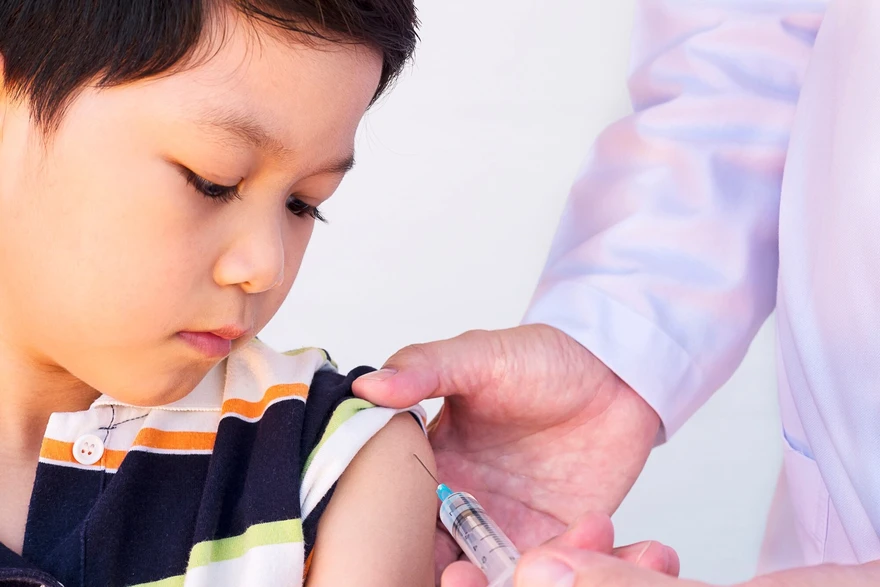


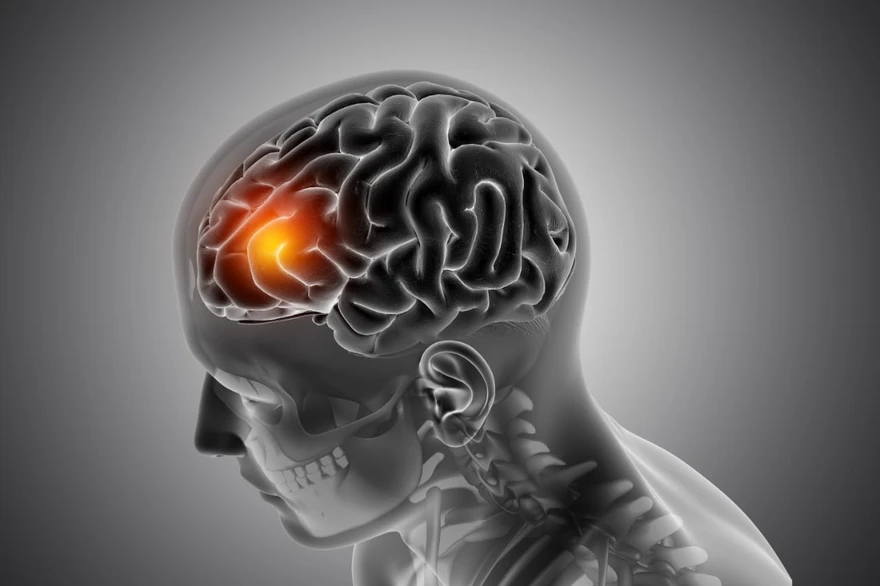

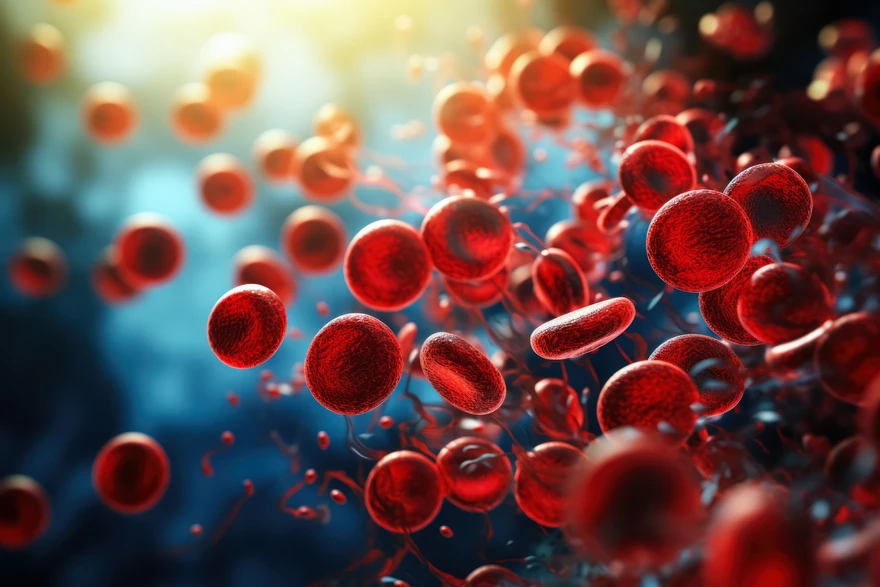

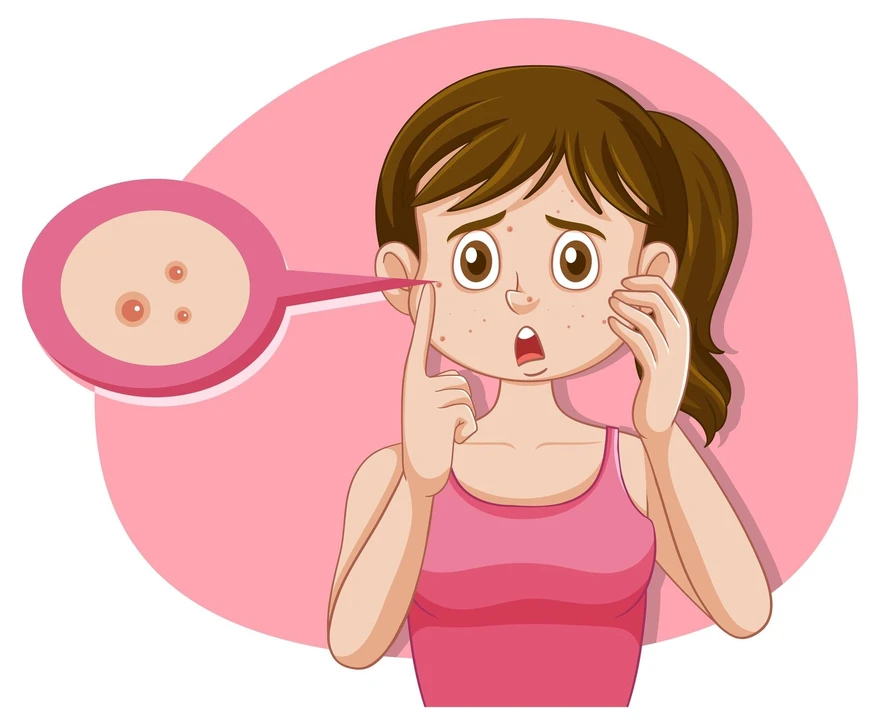








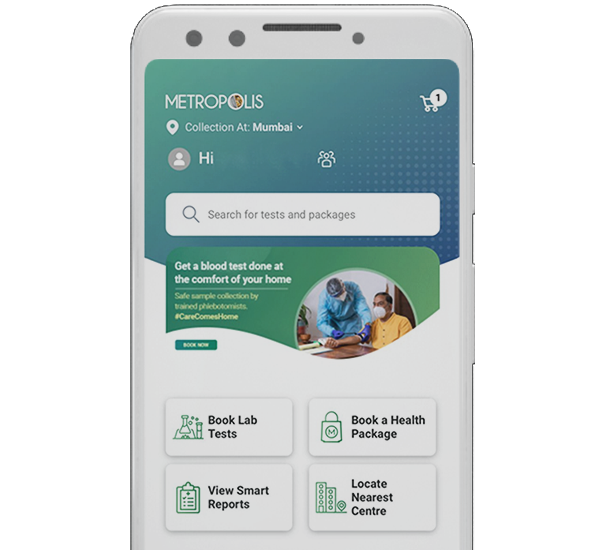
 WhatsApp
WhatsApp